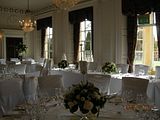


Flower with Jade Ring, On The Middle...

Thousands of blue water flowers and lilies - wallpaper 1600x1200px with blue lotus - Nymphaea Caerulea (blue water lilies) in a large rice field. Siem Reap near Tonle Sap.
In album Lotus flowers
Asim Shah posted a photo:
Asim Shah posted a photo:
Exotic flower
atheana
DCF 1.0
Robert Nyman
Like, flowers

A common symbiosis is the blue lotus / water lily together with water spinach in same lily ponds of fields peacefully side by side.
In album Lotus flowers



A large field of planted water spinach - water morning glory. Actua lly completely obsolete such farming as water spinach grows in abundance wild in sufficient quantities for any commercial use.
A simple farmers rule is to never plant on agriculture fields if you can have the same variety in wild from nature. Just care more and better for nature and you get all water spinach from nature, leaving the use of such rare fields to those plants that may need care to grown. Water spinach is completely maintenance free!
The water spinach here blossoms in both colors, plain white blossoms and also with lilac water spinach blossoms.
In album Nature pictures
pollen-flowers posted a photo

a beautiful autumnal day - 019-12.jpg


Huge fresh lotus field just starting to bloom in pink.
In album Lotus flowers
A few years ago if someone had mentioned gabions I wouldn't have known what they were talking about. They were something that was used in civil engineering, large scale industrial landscaping - a million miles away from domestic gardens. Now it seems they are becoming the cool thing to have.
 At Tatton there are gabions in the show gardens, in the back to backs and on the trade stands - people are taking home DIY versions!
At Tatton there are gabions in the show gardens, in the back to backs and on the trade stands - people are taking home DIY versions!
Basically a gabion is a metal - usually steel, cage filled with stones/rocks or various heavy materials. They are usually used to retain soil in banks and terraces or as barriers. I've seen taller, slim ones used as a wall and smaller, cubed ones made into seats - the permutations are endless, as demonstrated by the two young designers of the Visionary garden, Cubed3, at this year's Tatton.
 This gold medal winning design is a modular scheme, gabions are linked together like building blocks and used in different ways - some are filled with rocks as foundations, some are filled with soil and planted and some are placed in the pond, allowing you to walk over the water's surface. Larger cages have been left empty and plants are able to grow up through them - it's very effective.
This gold medal winning design is a modular scheme, gabions are linked together like building blocks and used in different ways - some are filled with rocks as foundations, some are filled with soil and planted and some are placed in the pond, allowing you to walk over the water's surface. Larger cages have been left empty and plants are able to grow up through them - it's very effective.
On the Edible Trends garden the Reaseheath College team have filled their gabions with carefully placed layers of stones and wood in decreasing sizes, creating a very pleasing pattern and a haven for wildlife. Apparently it took them ages to do but it looks fantastic.
A very 'green' way to fill your gabions is with odd bits of bricks, slates and tiles left over from building jobs, plus any empty bottles you may have accumulated. This is what they have used on A Place for Waste, another gold medal winning garden.
As you look around the show you will see all sorts of shapes and fillings and gabions used in many ways. I am feeling quite inspired and am planning to try something with sempervivums and I rather like the idea of turf cubes.
Info from:
Private Club






No comments:
Post a Comment